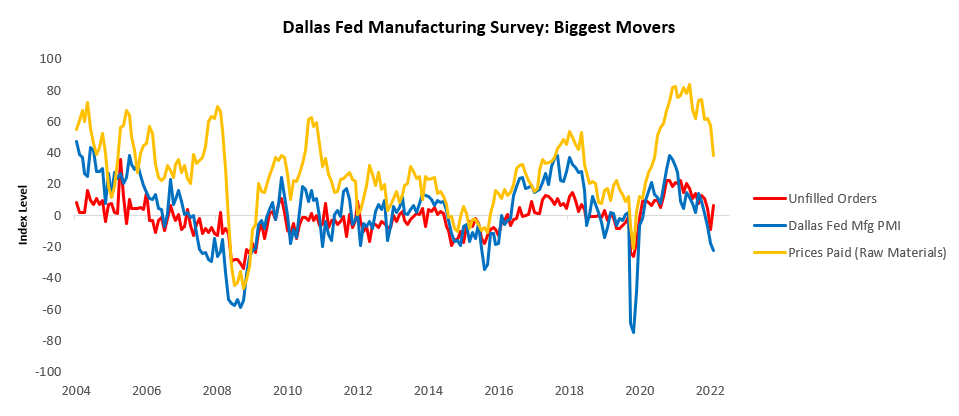Welcome to The Observatory. The Observatory is how we at Prometheus monitor the evolution of the economy and financial markets in real time. The insights provided here are slivers of our research process that are integrated algorithmically into our systems to create rules-based portfolios.
If you haven’t already, check out Episode 3 of the Prometheus Podcast! For this episode, we have a formidable guest- Mr. Blonde. Mr. Blonde is an independent macro strategist who chooses to remain anonymous. With significant experience on both the buy-side & sell-side- his equity-centric research is timely, precise, and pragmatic. This year, he’s done an excellent job expecting the bear market in stocks & the ensuing bear market rally. In a wide-ranging discussion, our Founder, Aahan Menon, helps Mr. Blonde take you through a masterclass in macro-equity investing. This episode is a must-listen for anyone investing or trading equities actively. Enjoy!
Below are the top observations coming from our systematic tracking of economic conditions:
i. PMI data continues to confirm decelerating economic conditions. The latest Dallas Fed Manufacturing PMI data showed a contractionary reading of -22.6, disappointing consensus expectations of -12.7. We offer the primary movers in this print below:
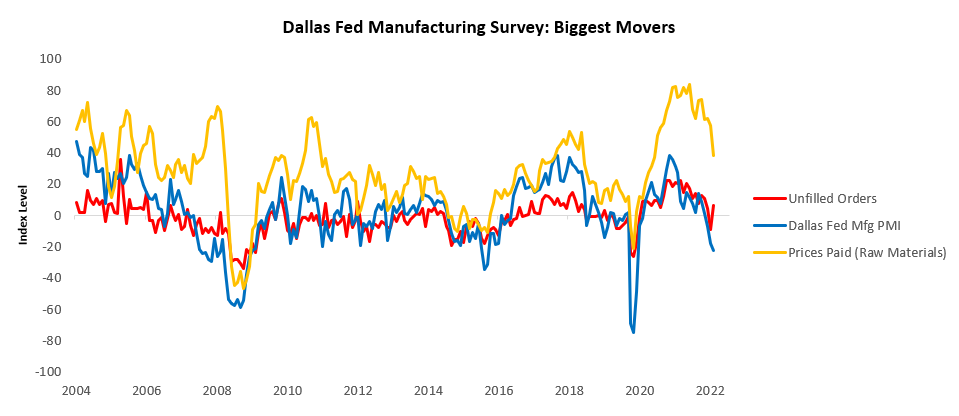
The largest gaining segment was Unfilled Orders, and the most significant slowdown was in Prices Paid (Raw Materials). This reading was a sequential deceleration within a decelerating trend. This deceleration in the prices paid component incrementally reinforces the message that the inflation impulse continues to deteriorate. We show the evolution of the full report below in the tabular form:

As we can see above, the broad range of indicators within the Dallas Fed Manufacturing Survey continues to show a material weakening over the last year. Our systems stay short equities & credit here.
ii. Policy liquidity withdrawal continues and is only going to increase. Liquidity is the stock of cash and cash-like assets, which form the dry powder for future economic and financial activity, i.e., liquidity potentiates future activity. The most dominant driver of liquidity in the modern era is the US Sovereign, which comprises both the Fed & Treasury. These entities’ liabilities are the private sector’s assets, and increasing liabilities fuel private sector balance sheets at no cost to the private sector. Currently, we are undergoing a historic level of tightening by these authorities, i.e., they are draining private sector assets. Below, we show the policy impulse coming from the US Sovereign after netting out intergovernmental holdings:
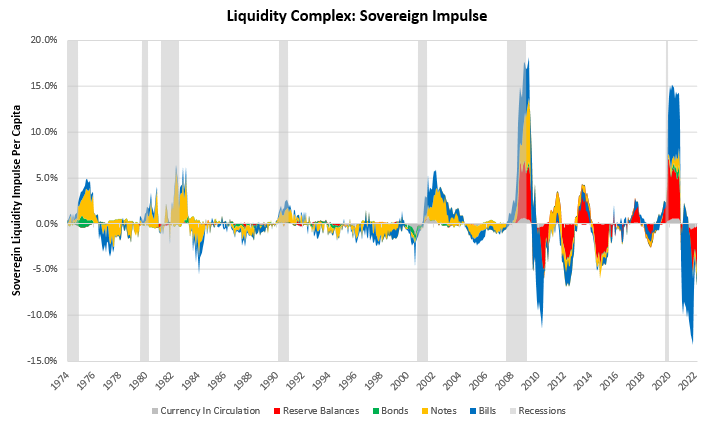
While the economy’s level of per capita liquidity remains elevated, new liquidty creation has plunged. This dynamic increases the pressures on asset markets and will only increase as the Fed begins the full pace of Quantitative Tightening this month. Quantitative Tightening will drain reserve balances from the financial sector, an essential contributor to aggregate liquidity conditions. We show our forecasts for the same below:
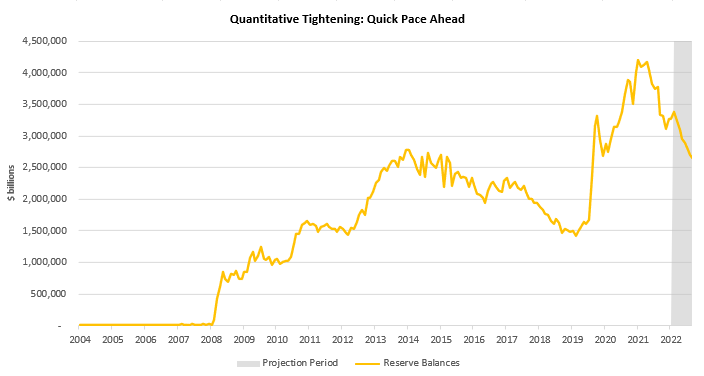
Tightening liquidity is a dangerous environment for all asset classes. As liquidity tightens, the engine that powers the monetary system grinds to a halt. Inflation is an offshoot of monetary excesses built up over the pandemic period, and indeed this is what will be required to offset inflationary pressures- however, the appetite to sustain this level of pain will be challenging for the Fed & Treasury to maintain.
iii. Stagflationary nominal growth continues to show strong market pricing. Nominal growth dynamics remain resilient as the economy works through monetary excesses built through joint monetary and fiscal support. During the COVID-19 crisis, government authorities created large amounts of liquidity in both financial markets and in the real economy. While the Fed is moving to drain some of this in markets via quantitative tightening, the fiscal authority can only drain its liquidity creation via taxation. Without higher taxation, it is extremely hard to destroy policy liquidity, as it is essentially cash, i.e., government liabilities have almost no risk of default and therefore can’t be written down significantly. Inflation is an organic result of this phenomenon, where liquid assets exceed the economy’s capacity, and the only way to mechanically correct these imbalances is to erode the currency’s value. Resultantly, markets continue to price these dynamics:
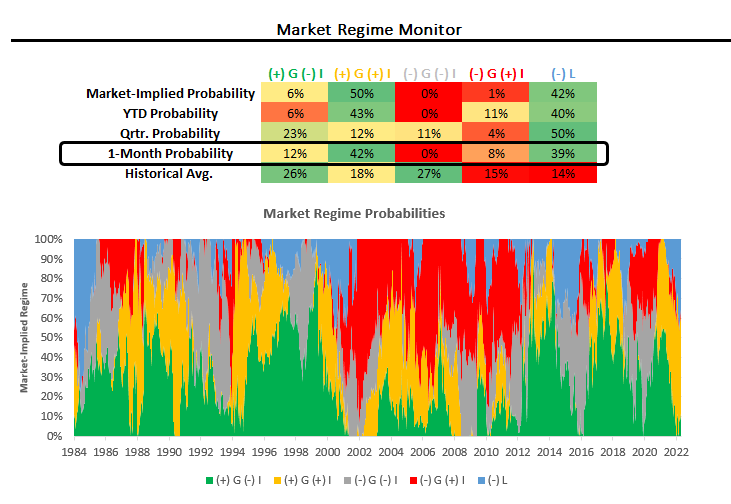
This environment doesn’t favor treasuries & doesn’t favor equities (selectively). This is further reinforced by our regime-expected returns that account for the economic environment and are a much better pro-cyclical gauge of the returns we can expect in a given environment:
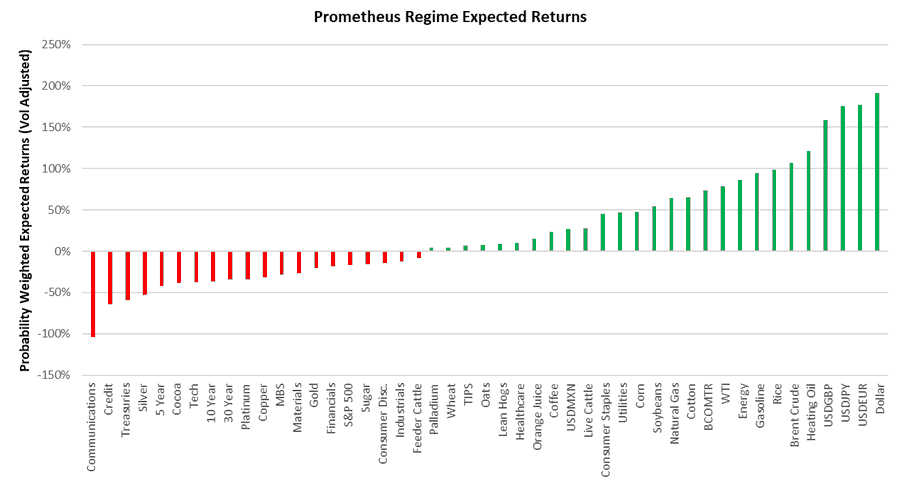
Resultantly our systems are net short equities & credit once again, alongside shorting treasuries. We have paired this with inflation hedges and long-dollar positions, creating a portfolio that will likely benefit from stagflationary dynamics and tighter liquidity conditions:
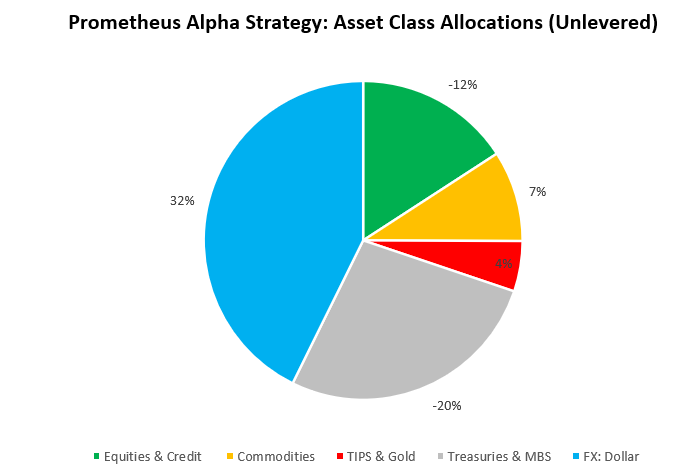
Our systematic approach has proven a strong guide this year, with our strategies In positive territory despite a difficult year for stocks & bonds. We continue to expect our strategies to harvest returns over the cycle:
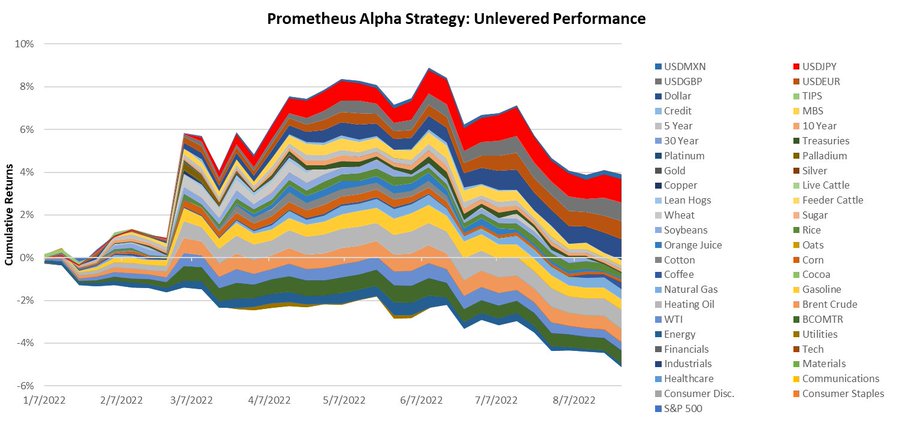
We will eventually reach a point when self-reinforcing dynamics of weakening growth will tip us into a deflationary environment, but we simply aren’t there yet. In the meantime, stay nimble.

